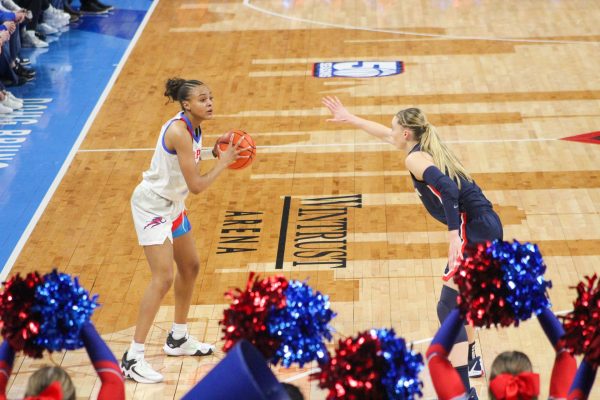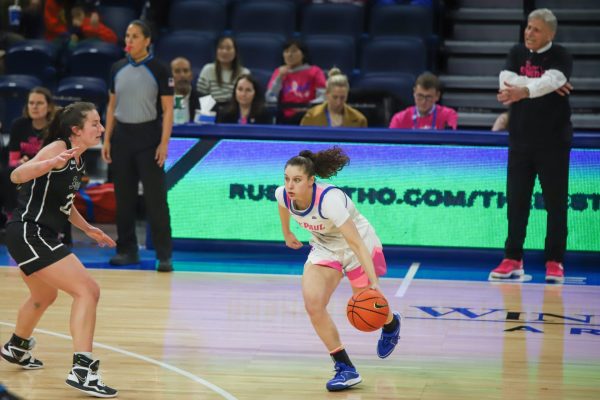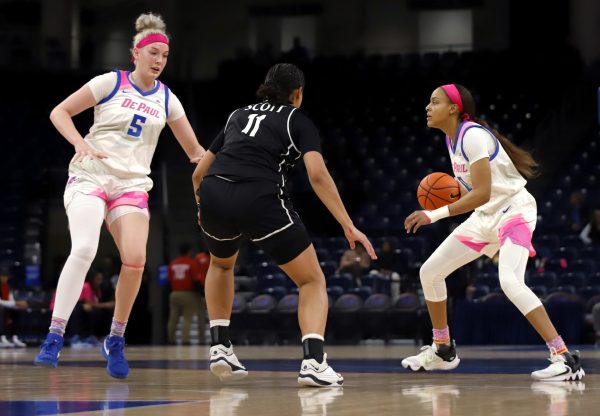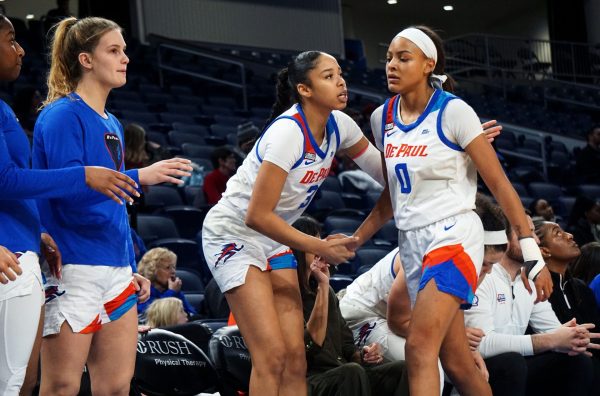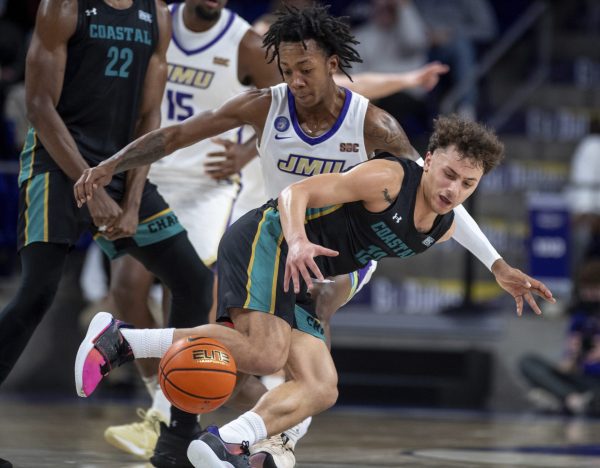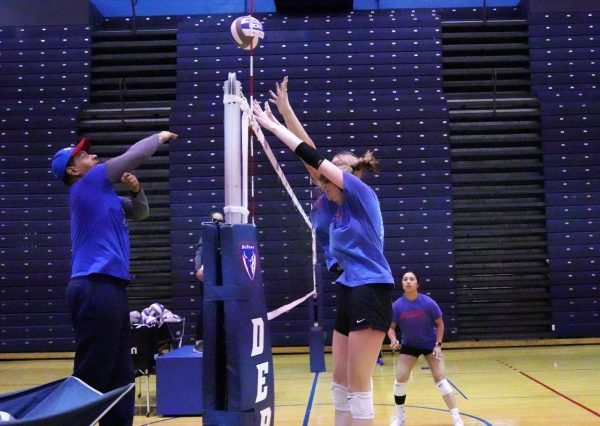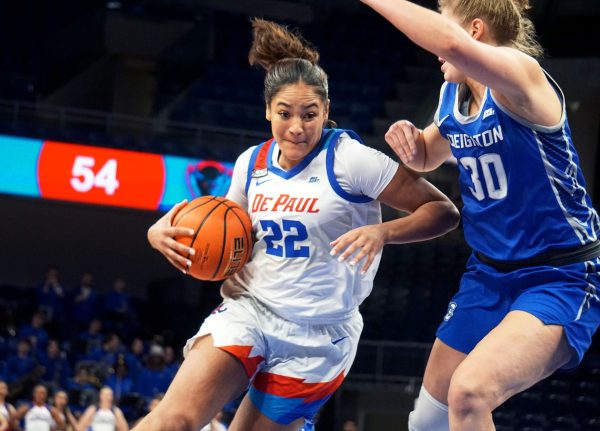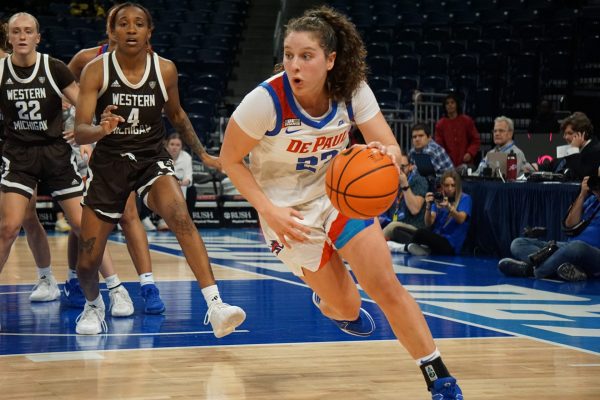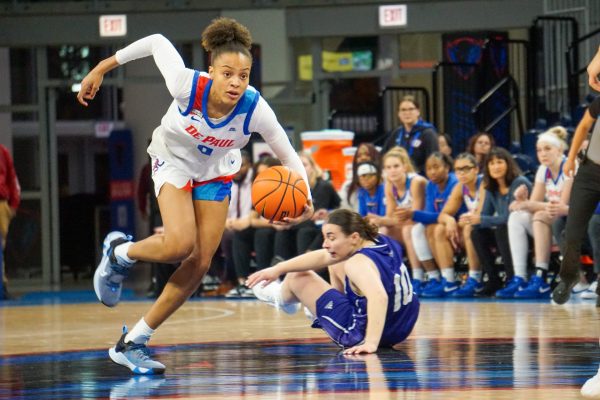Styles change, but “Bruno Ball” remains
Long before the Golden State Warriors dominated the NBA, Doug Bruno and his DePaul Blue Demons experienced success with a unique style of play that they continue to use today.
“DePaul Ball,” a term coined by television analyst LaChina Robinson, emphasizes 3-point shooting, floor spacing and an up-tempo offensive attack. But for the most accurate definition, look no further than the man who perfected it.
“You do the lunch pail work of rebounding and defending to earn the opportunity to have a party offense,” Bruno said.
The Chicago native is in his 32nd season as head coach of the women’s basketball team. In that time, he has compiled a 664-333 record, eight regular season conference championships and 22 NCAA Tournament appearances.
“I really believe, what’s important, is that a coach (whoever he or she is) decides how they want to play and stick to their style,” Bruno said. “I think we’ve done that.”
That’s an understatement, as their resume speaks for itself. Since the Big East Conference realignment prior to the 2013-14 season, DePaul has won every regular season title. Two of those,2014 and 2016, have been outright championships.
Even though they have faced a wide range of challenges, such as lack of size this season with Mart’e Grays being their tallest player at 6-feet-2 inches tall, it hasn’t stopped the Blue Demons from remaining a consistent powerhouse in terms of play.
A smaller lineup calls for more fundamentally sound players. One-dimensional pieces don’t fit into the puzzle. You have to be able shoot, rebound, pass and, most importantly, defend. That’s how position-less basketball works.
“Coach Bruno talks a lot about head, heart and guts,” said junior guard Ashton Millender. “So strength up the middle. You just got to coach yourself through defense. It’s having a will that this person is not going to score on me.”
Millender has proven to be a versatile threat on both ends of the floor. The starting guard has increased her 3-point field goal percentage every year she’s been at DePaul, from 28 percent as a freshman to 41 percent as a junior. Pair that with her on-ball defense, and she’s a mainstay on the wing.
Team defense may be the most overlooked attribute of the Blue Demons. After all, they do allow the most points per game in conference play with 71.7. But that statistic is misleading.
“Because we shoot so quickly, our opponent’s scores are never going to be low,” Bruno said. “You can’t shoot as much as we do to score as much as we do, and keep the opponent to 40 or 50 points.”
That’s why scoring margins are much more telling. DePaul outscores their opponents by an average of 10.7 points per game. That’s second to only Marquette (11.6) in the Big East conference.
The same goes for the Warriors in the NBA, who are in the bottom half of the league when it comes to opponent points per game (107.6). A total of 20 teams rank ahead of them in that metric. But none of those clubs would be favored in a head-to-head matchup against Golden State.
“If people take us out of our running game, I think we’re still a very efficient half court team,” said Bruno. “If we have to throw five, six, seven, eight passes to get a shot, we’re capable of doing that. Again, that goes back to the assists factor, so that there’s ball movement.”
Speaking of ball movement, few exemplify that trait better than senior guard Lauren Prochaska.
“We have the greenest green light in America, as coach (Bruno) likes to say,” Prochaska said. “But at the same time, he always says if there’s someone more open than you, give them the ball.”
“I think you see that with our assists and however many baskets we have a game. It’s usually pretty high.”
Prochaska, who recently earned the Big East Sportsmanship Award, is tied for second on the team with 94 assists this season — despite playing just 19.5 minutes per game. Like Millender, her teammate and friend, Prochaska has carved out a role in Bruno’s system.
“I want my players to have this anxiety over execution – I call it execution anxiety,” Bruno said. “I want their butterflies before every game to be anxious for the purpose of executing properly.
“Never be anxious about the result. And if you really, really care about your proper execution, individually and collectively, the score at the end of the game takes care of itself.”
For over three decades, it certainly has.




